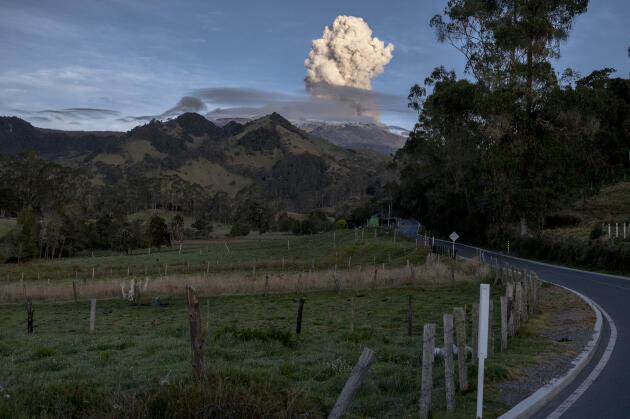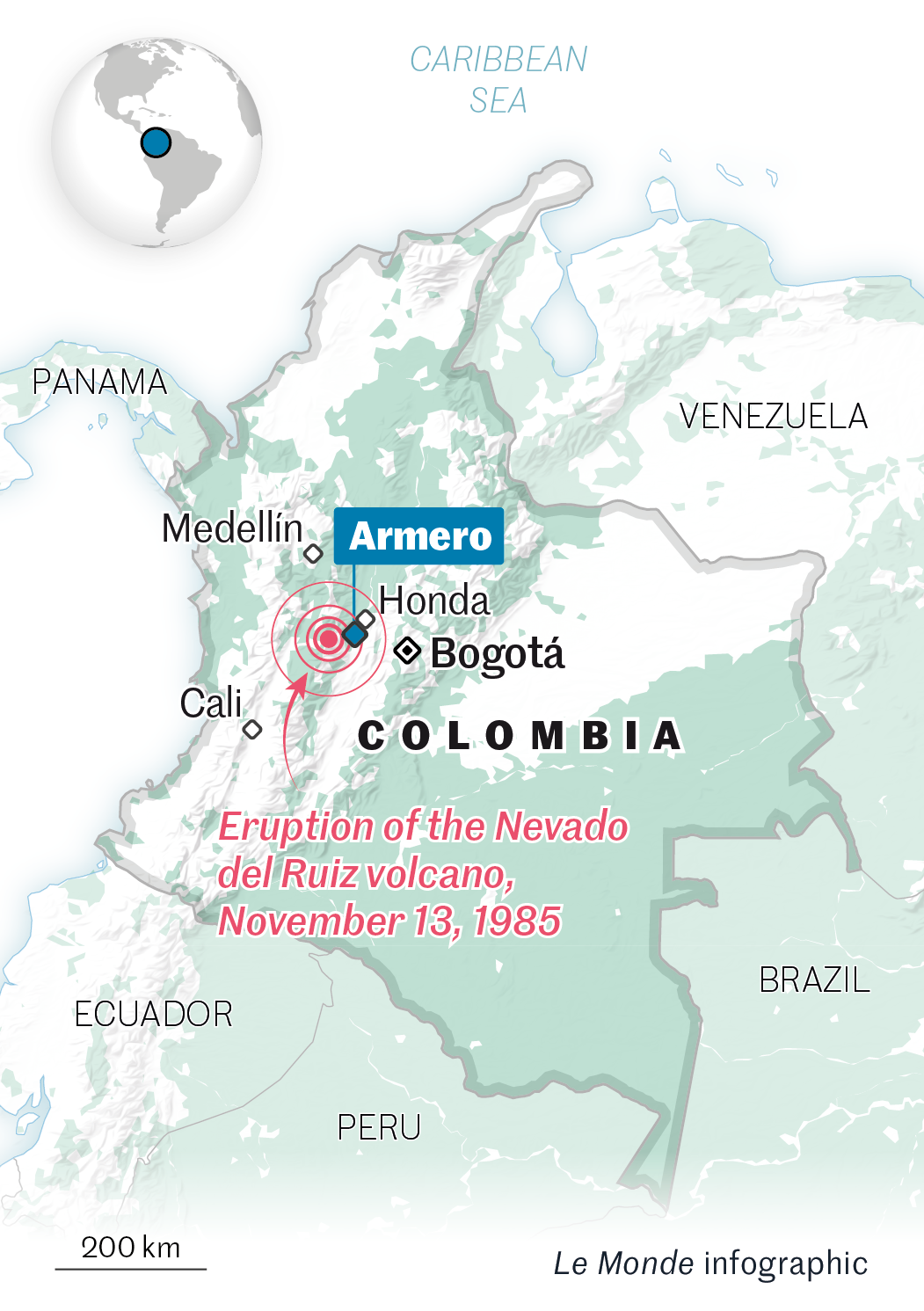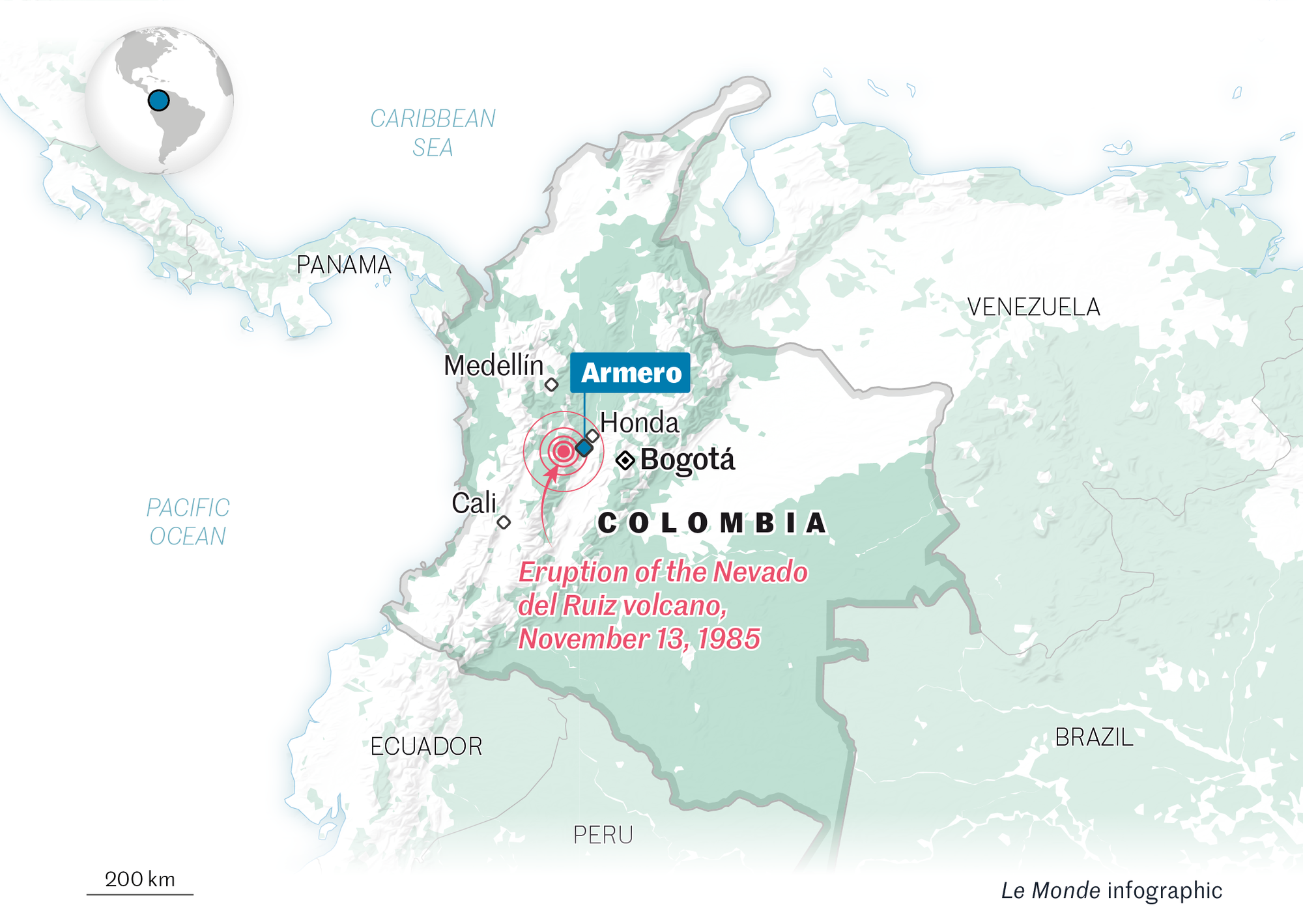

In Colombia, the endless search for the lost children of Armero
FeatureLiving after a disaster (3/6). In November 1985, a mudslide triggered by the eruption of the Nevado del Ruiz volcano swept away the town of Armero, killing 25,000 people. Decades later, families convinced that their children were put up for adoption have not lost hope of finding them.
In Bogotá, the capital of Colombia, Sandra Perez runs a business selling cosmetics made from clay gathered at the foot of the Andes. "It's miracle mud," she explained, occasionally checking her phone to confirm that the Nevado del Ruiz volcano in the Central Ranges had not erupted. For weeks, the mountain had been growling insistently, occasionally spewing columns of grey and yellow smoke. The authorities, who lifted in June the "orange" alert issued in April, never take their eyes off their monitoring screens.

"What a paradox, right?" said Perez. "The Armero mud took everything away from me and then made me a fortune." She was 13 years old when, on November 13, 1985, a mudslide rolled down the western flank of the volcano in the dead of night, and swept away the town of Armero, along with her childhood. The avalanche snatched her two-year-old sister from her arms and killed her mother. "Pulverized as though inside a cement mixer," her jaw and lungs were destroyed. Perez was evacuated on the first helicopter. "Just before taking off, the pilot said to the control tower: 'Confirmed, Armero no longer exists', I'll never forget that short phrase," she said. "When we arrived in Bogotá, the TV cameras were waiting for us. An aunt who lived in Florida saw me on TV. That was what saved me: My father, who had also survived, found me." According to the authorities, 25,000 people died that day. Perhaps more. And hundreds of surviving children were separated from their parents.
Omayra's agony
At the head of the Armando Armero Foundation (meaning "remake Armero"), which he set up in 2012, Francisco Gonzalez is still trying today to find these lost children "who have become adults but who have the right to know that they were not abandoned." A journalist by profession, he said: "It's a search that the authorities should have carried out at the time. As is often the case here in Colombia, civil society is doing the state's job." He added: "Watching images from the terrible earthquake that struck Turkey and Syria in February on television, and listening to journalists say that children pulled from the rubble were handed over to their families, I thought to myself that no lessons had been learned."
Almost 38 years after the tragedy, Perez still remains convinced that her little sister survived. However, she doesn't want to do a DNA test to try and find her. "I prefer to imagine her happy, somewhere," she said, who now has her own "totally amazing" family and a thriving business.
You have 85.9% of this article left to read. The rest is for subscribers only.


